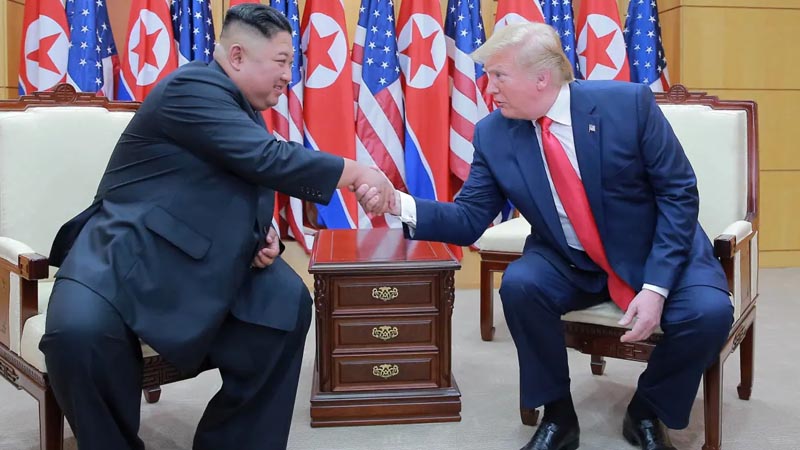Trump’s Return Sparks Kim Jong’s ‘Toughest’ Anti-U.S. Policy Plans Amid Diplomatic Speculation

Donald Trump speaks at the Conservative Political Action Conference (CPAC) on Feb. 24, 2024 in National Harbor, Maryland. (Photo by Anna Moneymaker/Getty Images)
North Korean leader Kim Jong Un declared plans to implement the “toughest” anti-U.S. policy as Donald Trump prepares to return to the White House, as per The Hill. The announcement, reported by North Korean state media on Sunday, comes less than a month before Trump’s inauguration and raises questions about the potential for high-profile diplomacy between the two leaders.
During Trump’s first term, he met with Kim three times in efforts to address North Korea’s nuclear program. However, experts suggest that a swift resumption of their summitry is unlikely, with Trump expected to prioritize conflicts in Ukraine and the Middle East. North Korea’s overt support for Russia’s war in Ukraine further complicates the prospects for renewed diplomacy, according to analysts.
At a five-day plenary meeting of the ruling Workers’ Party that concluded on December 27, 2024, Kim denounced the United States as “the most reactionary state that regards anti-communism as its invariable state policy.” He criticized the growing security partnership among the U.S., South Korea, and Japan, describing it as “a nuclear military bloc for aggression.”
“This reality clearly shows to which direction we should advance and what we should do and how,” Kim stated, according to the official Korean Central News Agency (KCNA). The report added that Kim’s speech outlined “the strategy for the toughest anti-U.S. counteraction to be launched aggressively” in pursuit of North Korea’s national interests and security.

Although the specifics of Kim’s anti-U.S. strategy were not disclosed, KCNA reported that he emphasized the need to bolster military capabilities through technological advancements. Kim also underscored the importance of improving the mental toughness of North Korean soldiers to prepare for future confrontations.
The past meetings between Trump and Kim, once hailed for easing tensions, had put an end to the leaders’ fiery rhetoric and threats. Trump even remarked that he and Kim had “fell in love” due to their strong personal connection. However, their talks collapsed in 2019 over disagreements on U.S.-led sanctions, and North Korea has since escalated its weapons testing activities, developing nuclear missiles targeting the U.S. and its allies.
In response, the U.S. and South Korea have expanded their military drills, including trilateral exercises with Japan. These moves have drawn sharp criticism from North Korea, which perceives them as invasion rehearsals. Adding to the tension, North Korea has deepened its military cooperation with Russia, reportedly providing more than 10,000 troops and conventional weapons to support Moscow’s war in Ukraine. In return, there are concerns that Russia could supply North Korea with advanced weapons technology, potentially aiding its nuclear missile development.
Efforts to impose additional U.N. sanctions on North Korea have been repeatedly blocked by Russia and China, both of whom are entangled in their own disputes with the U.S. Despite U.S. efforts, North Korea continues to defy U.N. Security Council resolutions through frequent missile tests.
Last month, Kim asserted that his previous negotiations with the U.S. had only confirmed Washington’s “unchangeable” hostility toward his country. He reaffirmed his commitment to strengthening North Korea’s nuclear arsenal as the sole means of countering external threats. As the global community watches, the future of U.S.-North Korea relations remains fraught with uncertainty.


